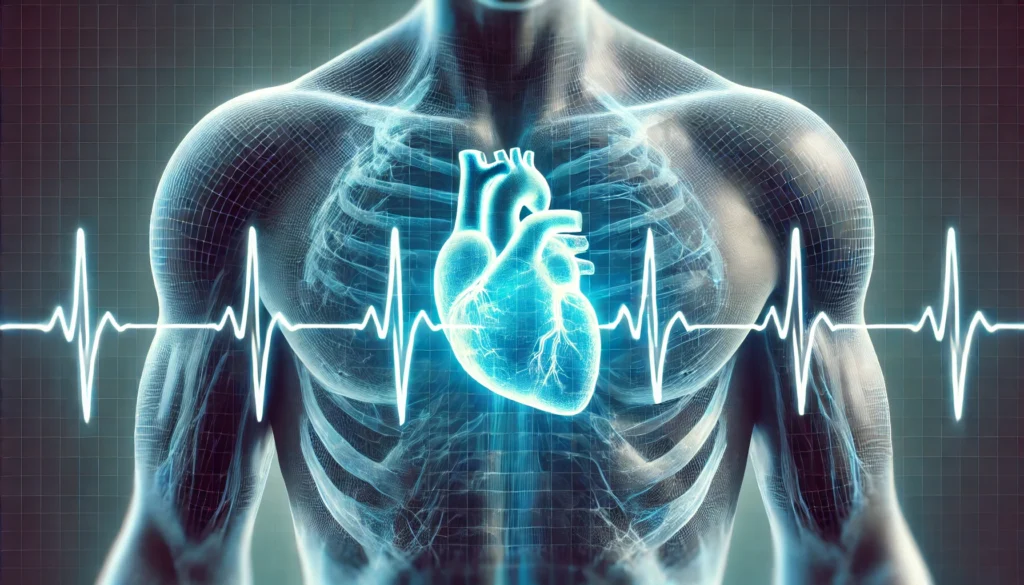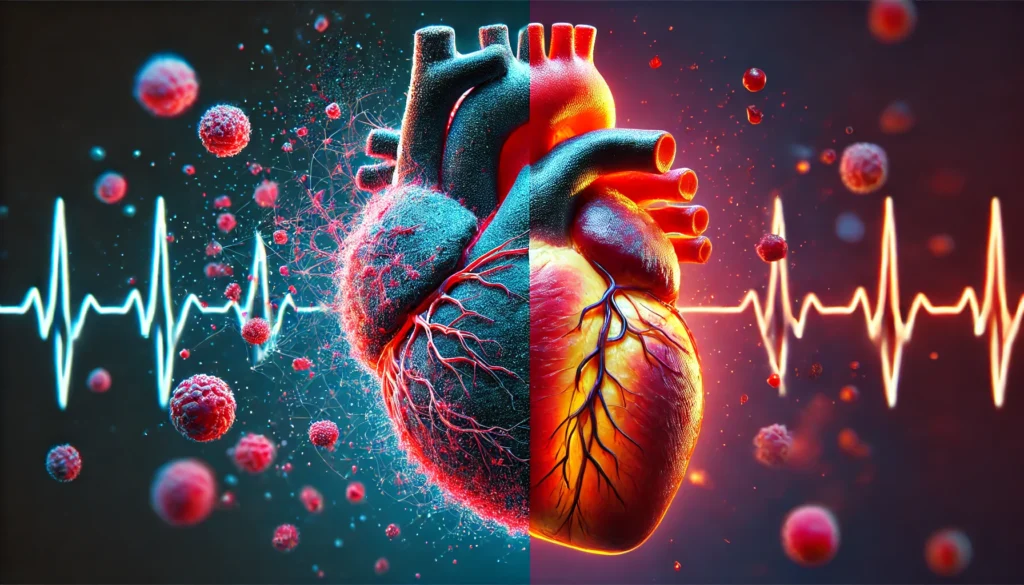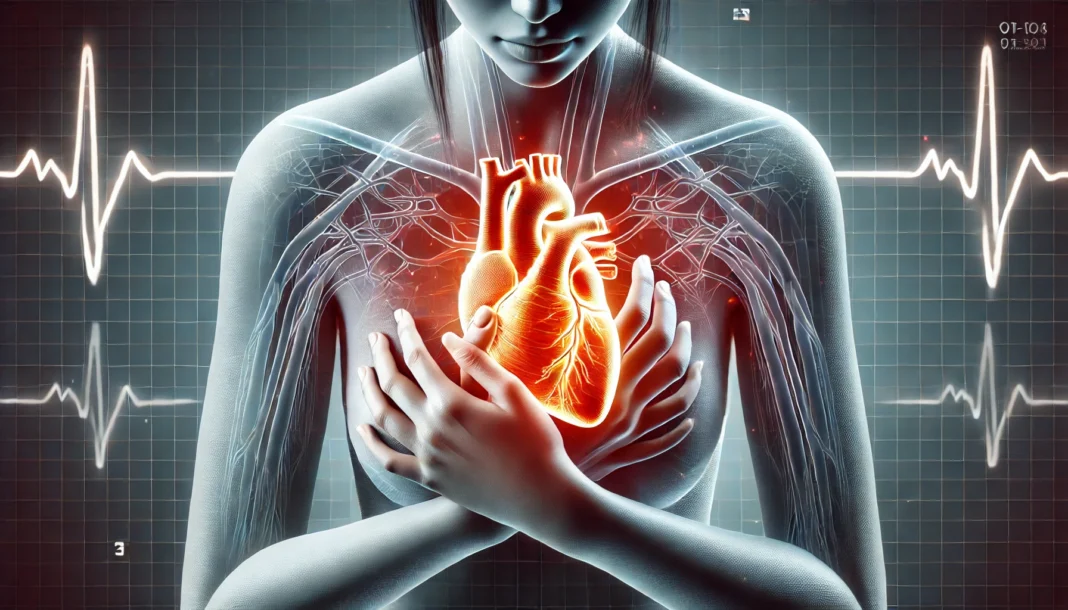Understanding the Terminology of Heart Conditions
The field of cardiology encompasses a wide range of conditions affecting the heart and its associated structures. Among the most commonly encountered terms in medical literature and clinical practice is the medical term for heart problems, which broadly refers to any disorder impacting the heart’s function, anatomy, or vascular system. These conditions range from congenital defects present at birth to acquired diseases that develop over time due to lifestyle factors, genetics, or other underlying medical issues.
You may also like: 5 Modern Treatments for Heart Disease: Advancements in Cardiac Care
A deeper understanding of the condition around the heart medical term requires an exploration of specific terminologies used in the diagnosis and treatment of heart-related diseases. Physicians and medical professionals rely on precise language to classify, diagnose, and manage cardiac disorders. For instance, cardiomyopathy refers to diseases affecting the heart muscle, while pericarditis describes inflammation of the pericardium, the protective sac around the heart. Similarly, coronary artery disease (CAD) is a leading cause of heart-related complications and is frequently referenced in clinical discussions and research studies.

The Significance of Accurate Diagnosis in Cardiology
Properly identifying and defining a heart condition is crucial for effective treatment. The presence of ambiguous or misunderstood terminology can lead to misdiagnosis, which may compromise patient care. When discussing the medical term for heart problems, it is important to recognize that these terms serve as the foundation for diagnosis and treatment protocols. Cardiology specialists undergo extensive training to ensure that heart-related conditions are categorized and managed with precision.
The term cardiovascular disease (CVD) is an umbrella term that encompasses various heart-related ailments, including atherosclerosis, arrhythmias, and heart failure. It is critical to differentiate between these conditions because treatment approaches differ significantly. For example, heart failure requires lifestyle modifications, medication, and possibly surgical interventions, whereas arrhythmias may necessitate the use of pacemakers or antiarrhythmic drugs. The ability to recognize the distinct condition around the heart medical term is essential in guiding both clinical decision-making and patient education.

Common Heart Conditions and Their Medical Terminology
Coronary Artery Disease (CAD)
One of the most frequently diagnosed cardiac conditions is coronary artery disease (CAD), which is characterized by the narrowing or blockage of the coronary arteries due to plaque buildup. This condition can lead to angina pectoris, a term used to describe chest pain resulting from reduced blood flow to the heart muscle. If untreated, CAD can escalate to myocardial infarction, more commonly known as a heart attack.
The medical terminology associated with CAD also includes ischemia, referring to a restricted blood supply that deprives the heart of necessary oxygen and nutrients. The progression of ischemia can result in ischemic heart disease (IHD), which is a leading cause of morbidity and mortality worldwide. Recognizing these terms enables healthcare professionals to implement appropriate interventions that may include medications, lifestyle modifications, or surgical procedures such as coronary artery bypass grafting (CABG) and percutaneous coronary intervention (PCI).
Cardiomyopathy and Heart Muscle Disorders
The term cardiomyopathy encompasses a group of diseases that affect the heart muscle, impairing its ability to pump blood efficiently. There are various types of cardiomyopathy, including dilated cardiomyopathy, where the heart chambers become enlarged and weakened, and hypertrophic cardiomyopathy, which involves the thickening of the heart muscle, reducing its ability to function properly.
Another important term related to heart muscle conditions is restrictive cardiomyopathy, a less common form characterized by stiffened heart walls that restrict normal filling and contraction. Cardiologists rely on echocardiography and other imaging techniques to differentiate among these conditions and determine the appropriate course of action for management.
Arrhythmias and Irregular Heart Rhythms
An arrhythmia is any irregularity in the heart’s rhythm, and it can range from benign variations to life-threatening disturbances. Atrial fibrillation (AFib) is one of the most commonly diagnosed arrhythmias, characterized by rapid and chaotic electrical impulses in the atria. If left untreated, AFib can increase the risk of thromboembolism and stroke.
Another term used in the classification of arrhythmias is ventricular tachycardia (VT), which refers to an abnormally fast heart rate originating in the ventricles. Severe cases of VT can lead to ventricular fibrillation (VFib), a condition that requires immediate medical intervention due to its association with sudden cardiac arrest. The precise identification of arrhythmias is essential for determining the most effective treatment, whether through pharmacological management, electrical cardioversion, or implantable devices such as pacemakers and defibrillators.
Warning Signs and Symptoms of Heart Disease
Recognizing the early warning signs of heart disease is crucial in preventing severe complications. Symptoms can vary depending on the specific heart condition but often include chest pain, shortness of breath, palpitations, fatigue, and dizziness. Some conditions, such as silent ischemia, may present without noticeable symptoms, making regular screenings and diagnostic tests essential for individuals at risk.
It is also important to be aware of atypical symptoms, which may manifest differently in certain populations, including women and older adults. For example, while chest pain is a hallmark symptom of a heart attack, some individuals may experience jaw pain, nausea, or unexplained weakness. Understanding these variations enables earlier detection and prompt medical intervention, reducing the likelihood of adverse outcomes.

Frequently Asked Questions (FAQ) About Heart Conditions
1. What are the most commonly used medical terms for heart problems? The medical term for heart problems varies depending on the specific condition affecting the heart. For instance, cardiomyopathy refers to diseases of the heart muscle that can weaken its ability to pump blood. Arrhythmia describes any irregularity in heart rhythm, while coronary artery disease (CAD) is a leading cause of heart-related complications due to plaque buildup in the arteries. Pericarditis, an inflammation of the pericardium, is another notable term, often linked to infections or autoimmune disorders. Understanding these terms allows patients to better communicate with healthcare professionals and grasp the implications of different heart conditions.
2. What does the term ‘condition around the heart’ mean in medical terminology? The condition around the heart medical term typically refers to disorders affecting the structures surrounding the heart, such as the pericardium, coronary arteries, or great vessels. One of the most recognized conditions is pericardial effusion, where excess fluid accumulates around the heart, potentially leading to cardiac tamponade, a life-threatening situation. Another example is pericarditis, an inflammation of the heart’s outer lining, which may result from infections, autoimmune diseases, or trauma. Additionally, aortic aneurysm, a dangerous dilation of the aorta near the heart, can pose serious health risks if left untreated. These conditions emphasize the importance of routine cardiovascular assessments and timely medical intervention.
3. How do early warning signs of heart disease differ between men and women? The symptoms of heart disease often manifest differently between men and women, making early detection more challenging in some cases. While men frequently report chest pain (angina) as the primary warning sign, women are more likely to experience subtler symptoms such as fatigue, nausea, and shortness of breath. Women also report more frequent jaw pain, back pain, and dizziness, which are sometimes misinterpreted as signs of other illnesses. These differences highlight the importance of gender-specific awareness and screenings, ensuring early intervention for both men and women. Understanding how the medical term for heart problems manifests uniquely across genders can lead to more accurate and timely diagnoses.
4. Can stress contribute to heart problems? Yes, chronic stress is a significant factor in the development of cardiovascular disease. Long-term exposure to stress hormones such as cortisol and adrenaline can elevate blood pressure, increase heart rate, and contribute to arterial damage. Stress can also lead to unhealthy coping mechanisms such as smoking, excessive alcohol consumption, and poor dietary habits, all of which raise the risk of heart disease. Furthermore, conditions such as stress cardiomyopathy (Takotsubo syndrome) mimic heart attacks and are triggered by acute emotional distress. Managing stress through mindfulness, exercise, and relaxation techniques can help mitigate these risks and promote heart health.
5. What role does inflammation play in heart disease? Inflammation is a critical factor in many heart conditions, often acting as both a cause and consequence of cardiovascular disease. Chronic inflammation can lead to plaque buildup in the arteries, a process known as atherosclerosis, which increases the risk of heart attacks and strokes. Conditions such as pericarditis, an inflammation of the heart’s outer lining, highlight the direct impact inflammation can have on cardiovascular health. Recent research has also linked systemic inflammation to conditions like heart failure and atrial fibrillation, demonstrating the widespread effects of immune system dysregulation. Lifestyle choices such as a balanced diet rich in anti-inflammatory foods, regular physical activity, and avoiding processed sugars can help control inflammation and protect the heart.
6. How does high blood pressure affect the heart? High blood pressure, or hypertension, is one of the most common contributors to heart disease. It forces the heart to work harder to pump blood, leading to left ventricular hypertrophy (LVH), where the heart’s muscular walls thicken over time. Persistent hypertension can damage arteries, increasing the likelihood of atherosclerosis, heart failure, and even aneurysms. Furthermore, high blood pressure is a major risk factor for stroke and kidney disease, illustrating its systemic impact on overall health. Proper management through lifestyle modifications and, if necessary, medication can significantly reduce cardiovascular risks.
7. Are there specific medical terms used to describe congenital heart defects? Yes, congenital heart defects (CHDs) have unique medical classifications that describe structural abnormalities present from birth. Tetralogy of Fallot (TOF) is a well-known condition characterized by four heart defects that impede blood flow. Atrial septal defect (ASD) and ventricular septal defect (VSD) refer to holes in the heart’s walls, causing improper circulation between heart chambers. Another serious condition is transposition of the great arteries (TGA), where major arteries are incorrectly positioned, requiring immediate intervention after birth. Awareness of these medical classifications enables early detection and treatment, improving outcomes for affected individuals.
8. Can heart disease be reversed with lifestyle changes? While some forms of heart disease are irreversible, many can be managed or even improved through dedicated lifestyle modifications. Coronary artery disease (CAD), for instance, can be slowed or partially reversed through dietary improvements, regular exercise, and smoking cessation. Emerging research suggests that plant-based diets rich in antioxidants and healthy fats can reduce arterial plaque buildup, lowering heart disease risk. Conditions such as hypertension and metabolic syndrome can also improve significantly with weight management and stress reduction. Though medical intervention remains necessary in some cases, lifestyle changes play a critical role in overall cardiovascular health.
9. What is the link between diabetes and heart disease? Diabetes and heart disease are closely interconnected, with individuals suffering from type 2 diabetes being at a much higher risk for cardiovascular complications. High blood sugar levels contribute to endothelial dysfunction, damaging blood vessels and increasing susceptibility to atherosclerosis. Additionally, diabetes is associated with higher rates of hypertension, obesity, and lipid imbalances, all of which compound heart disease risk. Diabetic cardiomyopathy, a lesser-known condition, affects the heart muscle independently of arterial disease, reducing cardiac efficiency. Proper blood sugar control, combined with cardiovascular screenings, is essential for reducing the risk of severe complications.
10. What emerging treatments are being researched for heart disease? Recent advancements in cardiology have led to promising new treatments for heart disease. Regenerative medicine, including stem cell therapy and tissue engineering, aims to repair damaged heart tissue and restore function. Gene therapy is another groundbreaking approach, with researchers exploring genetic modifications to prevent inherited heart conditions. Additionally, novel drug classes such as PCSK9 inhibitors show great promise in dramatically lowering cholesterol levels beyond what traditional statins can achieve. Advancements in AI-driven diagnostics and wearable technology are also transforming early detection and personalized treatment strategies. These innovations highlight the rapidly evolving landscape of cardiovascular medicine, offering hope for more effective and tailored heart disease management in the future.
Conclusion: The Importance of Heart Health Awareness
The ability to recognize and understand the medical term for heart problems plays a vital role in promoting heart health and preventing serious complications. A thorough grasp of cardiology-related terminology allows for more effective communication between healthcare providers and patients, ensuring that individuals receive accurate diagnoses and timely treatment.
Furthermore, knowledge of the condition around the heart medical term empowers individuals to take proactive steps in maintaining cardiovascular health, such as adopting a heart-healthy diet, engaging in regular physical activity, and adhering to prescribed medications. With ongoing advancements in medical research and technology, continuous education on heart disease terminology remains essential for improving patient outcomes and reducing the global burden of cardiovascular disease.
cardiovascular health terms, heart disease symptoms, types of heart conditions, diagnosing heart problems, cardiac risk factors, coronary health issues, understanding heart failure, circulatory system disorders, heart attack warning signs, managing high blood pressure, heart disease prevention tips, cardiac care strategies, arrhythmia treatment options, pericardial disorders, lifestyle changes for heart health, early signs of heart disease, common heart ailments, structural heart conditions, cardiology medical terminology, improving heart function
Further Reading:
About Heart Attack Symptoms, Risk, and Recovery
Disclaimer
The information contained in this article is provided for general informational purposes only and is not intended to serve as medical, legal, or professional advice. While MedNewsPedia strives to present accurate, up-to-date, and reliable content, no warranty or guarantee, expressed or implied, is made regarding the completeness, accuracy, or adequacy of the information provided. Readers are strongly advised to seek the guidance of a qualified healthcare provider or other relevant professionals before acting on any information contained in this article. MedNewsPedia, its authors, editors, and contributors expressly disclaim any liability for any damages, losses, or consequences arising directly or indirectly from the use, interpretation, or reliance on any information presented herein. The views and opinions expressed in this article are those of the author(s) and do not necessarily reflect the official policies or positions of MedNewsPedia.


